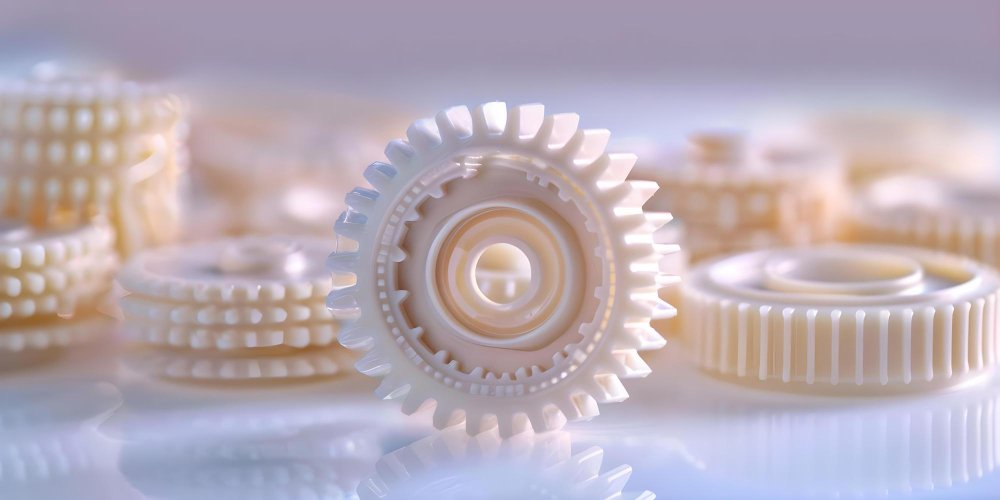
The evolution of gear manufacturing has seen significant advancements with the introduction of novel materials that offer unique benefits over traditional metals. Among these materials, ceramics and plastics have emerged as viable alternatives, each bringing distinct advantages to various applications. This article delves into the role of ceramic and plastic materials in gear manufacturing, exploring their properties, applications, and the benefits they offer over traditional materials.
Ceramic materials, known for their hardness and thermal stability, have been increasingly used in gear manufacturing. They offer several advantages over traditional metal gears, particularly in high-stress and high-temperature environments.
Properties of Ceramic Materials:
Ceramic materials are renowned for their exceptional hardness, which makes them highly resistant to wear and tear. This property is particularly beneficial in applications where gears are subjected to continuous friction and wear. Additionally, ceramics exhibit remarkable thermal stability, allowing them to withstand high temperatures without losing their mechanical properties. This makes them ideal for applications in high-temperature environments. Another noteworthy property of ceramics is their corrosion resistance. Unlike metals, ceramics are not prone to corrosion, making them suitable for use in chemically aggressive environments.
Applications of Ceramic Gears:
Ceramic gears find extensive applications in various high-performance and demanding environments. In the aerospace industry, their high strength-to-weight ratio is highly advantageous, making them suitable for use in turbine engines and other high-performance components. In the automotive sector, ceramic gears are used in high-performance applications, including racing cars, where their thermal stability and wear resistance are critical. Additionally, the biocompatibility and sterilisation capabilities of ceramics make them suitable for use in medical devices and equipment, ensuring reliability and safety in medical applications.
Benefits of Ceramic Gears:
Ceramic gears offer several significant benefits that enhance their appeal in various applications. Due to their hardness and wear resistance, ceramic gears have a longer service life compared to metal gears. This longevity translates into reduced maintenance and replacement costs. Also, ceramic gears can operate at higher speeds and loads without deformation, leading to more efficient power transmission. The corrosion resistance of ceramics further reduces the need for frequent maintenance and replacement, resulting in lower operational costs and improved overall efficiency.
Plastic gears, on the other hand, are known for their versatility and cost-effectiveness. They are widely used in applications where noise reduction, lightweight, and cost savings are prioritised.
Properties of Plastic Materials:
Plastic materials possess several properties that make them ideal for gear manufacturing. One of the most notable properties is their lightweight nature. Plastic gears are significantly lighter than their metal counterparts, which reduces the overall weight of the machinery and improves efficiency. Additionally, plastics have inherent damping properties, which help in reducing noise and vibration during gear operation. This property is particularly valuable in applications where noise reduction is critical. Furthermore, the production of plastic gears is generally less expensive than metal gears, making them an economical choice for many applications.
Applications of Plastic Gears:
Plastic gears are widely used in various industries due to their unique properties. In the consumer electronics industry, plastic gears are commonly found in devices such as printers, cameras, and household appliances, where their lightweight and noise reduction capabilities are highly valued. In the automotive industry, plastic gears are used in non-critical applications such as window regulators, seat adjusters, and HVAC systems, where their cost-effectiveness and lightweight properties are beneficial. Plastic gears are employed in various industrial machinery where high load and high-speed operations are not required, providing reliable performance in less demanding applications.
Benefits of Plastic Gears:
Plastic gears offer numerous benefits that make them a popular choice in various applications. One of the primary advantages is the ease of customization. Plastic gears can be easily moulded into complex shapes, allowing for greater design flexibility and customization. Many plastic gears are self-lubricating, which reduces the need for additional lubricants and simplifies maintenance. This property not only reduces maintenance costs but also improves the overall efficiency of the machinery. Like ceramics, plastics are resistant to corrosion, making them suitable for use in harsh environments where exposure to chemicals and moisture is a concern.
Comparative Analysis
While both ceramic and plastic gears offer unique advantages, their suitability depends on the specific requirements of the application. Ceramic gears excel in high-strength and high-temperature applications, thanks to their exceptional hardness, thermal stability, and corrosion resistance. They are ideal for use in demanding environments where long service life and efficient power transmission are critical. However, the manufacturing processes for ceramic gears are more complex and costly compared to plastic gears, limiting their use to high-performance and high-value applications.
On the other hand, plastic gears are more cost-effective to produce and offer significant advantages in terms of lightweight, noise reduction, and ease of customization. They are ideal for applications where noise reduction, lightweight, and cost savings are prioritised, such as consumer electronics, automotive non-critical components, and industrial machinery. However, plastic gears may not be suitable for high-load and high-speed applications due to their lower strength compared to metals. The inherent brittleness of ceramics can also be a limitation in applications involving shock loads or impact.

The use of ceramic and plastic materials in gear manufacturing represents a significant advancement in the field, offering unique benefits over traditional metals. Ceramics provide exceptional hardness, thermal stability, and corrosion resistance, making them ideal for high-stress and high-temperature applications. Plastics, on the other hand, offer versatility, cost-effectiveness, and noise reduction, making them suitable for a wide range of applications. As material science and manufacturing technologies continue to evolve, the role of ceramic and plastic materials in gear manufacturing is set to expand, driving further innovation and efficiency in the industry.